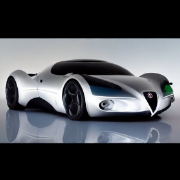Lamborghini Aventador SVJ (Spy)
-
Contenuti simili
-
Lamborghini "Bravo Marcello" 1 2 3 4
Pubblicato da Tony ramirez,
- lamborghini bravo marcello
- lamborghini
- (e 1 altro in più)
- 36 risposte
- 2381 visite
-
Lamborghini Temerario 2024 1 2 3 4 7
Pubblicato da Jonathan19,
- huracan
- lamborghini phev
- (e 7 altri in più)
- 66 risposte
- 10336 visite
-
Lamborghini Huracan II PHEV 2024 - Prj. LB634 (Leak) 1 2 3 4 15
Pubblicato da Beckervdo,
- lamborghini spy
- huracan phev
- (e 7 altri in più)
- 149 risposte
- 33780 visite
-
-
-



.thumb.jpg.902d2a4f20a129e92b6f6920407b81bd.jpg)
















Messaggi Raccomandati: